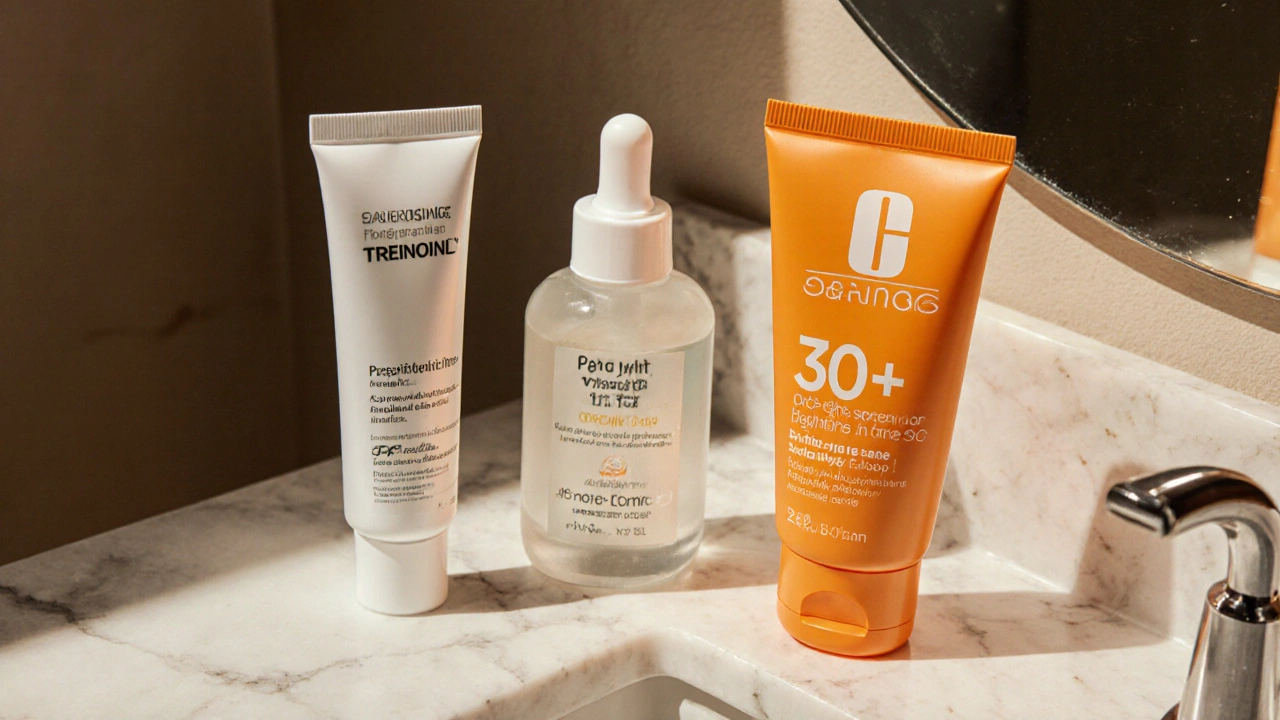Retinoids: The Skin‑Boosting Powerhouse You Need to Know
When talking about retinoids, a family of vitamin A‑derived compounds that speed up skin cell turnover and boost collagen production. Also known as vitamin A acids, they include both over‑the‑counter options like retinol, a milder, skin‑friendly form that converts to active retinoic acid after application and prescription‑strength agents such as tretinoin, the gold‑standard for acne and deep‑line reduction. In everyday language, people often group these under the umbrella term anti‑aging, because of their proven ability to smooth fine lines, even skin tone, and improve texture. The key thing to remember is that retinoids work by encouraging fresh cells to rise to the surface faster than they normally would, which explains why consistent use can turn dull, uneven skin into a brighter, more resilient canvas.
How Retinoids Fit Into a Modern Skincare Routine
Most skin‑care professionals recommend pairing retinoids with the 4‑2‑4 rule, a layering strategy that balances actives, moisturizers and sunscreen across morning and evening. In the morning, you’ll want a gentle cleanser, a lightweight antioxidant serum, and broad‑spectrum SPF 30 or higher – never skip the sunscreen because retinoids increase photosensitivity. At night, after a clean face, apply a pea‑sized amount of retinoid, then follow with a barrier‑repair moisturizer to calm any irritation. This routine mirrors advice from our “Daily Skincare Routine” guide and aligns with the “Medical Grade Skincare vs Organic Skincare” comparison, which notes that medical‑grade products often include retinoids while many organic lines avoid them due to stability issues. If you’re new to retinoids, start with a low concentration of retinol two to three times a week and gradually build frequency as your skin adapts – this helps minimize the common “retinoid purge” and keeps your barrier happy.
Retinoids aren’t just for anti‑aging; they’re a cornerstone in acne management because they unclog pores and reduce inflammation. That dual action makes them a favorite in both professional treatments and at‑home regimens. When combined with other actives like niacinamide or hyaluronic acid, you can address multiple concerns without overloading the skin. For those who prefer natural alternatives, our “Natural Face Tightener Explained” article suggests ingredients like peptides and plant‑based collagen boosters, but keep in mind they rarely match the potency of a well‑formulated retinoid. Whether you’re looking at “Top Anti‑Aging Drugs” like NAD+ boosters or exploring “Anti‑Aging Drinks”, retinoids remain the most research‑backed topical option for visible results. Understanding how they interact with other ingredients helps you build a routine that’s both effective and sustainable.
Below you’ll find a curated set of articles that dive deeper into the topics we just touched on – from the science behind medical‑grade versus organic formulas, to practical tips for incorporating retinoids into the 4‑2‑4 rule, to real‑world product recommendations. These posts will give you a fuller picture of where retinoids sit in the beauty landscape and how you can use them to achieve clearer, younger‑looking skin.
Effective Solutions for Wrinkles: What Really Works?
Discover which wrinkle solutions truly work-from retinoids and Botox to laser resurfacing-plus a step‑by‑step plan, comparison table, and myths busted.

